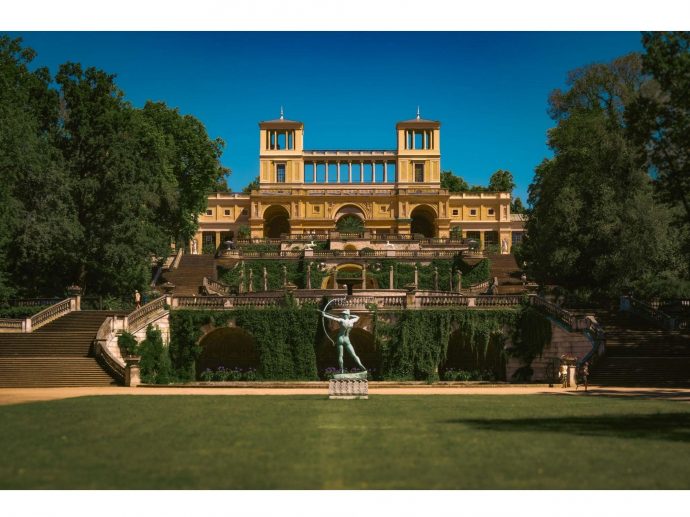Categories more
- Adventures (17)
- Arts / Collectables (15)
- Automotive (37)
- Aviation (11)
- Bath, Body, & Health (77)
- Children (6)
- Cigars / Spirits (32)
- Cuisine (16)
- Design/Architecture (22)
- Electronics (13)
- Entertainment (4)
- Event Planning (5)
- Fashion (46)
- Finance (9)
- Gifts / Misc (6)
- Home Decor (45)
- Jewelry (41)
- Pets (3)
- Philanthropy (1)
- Real Estate (16)
- Services (23)
- Sports / Golf (14)
- Vacation / Travel (60)
- Watches / Pens (15)
- Wines / Vines (24)
- Yachting / Boating (17)
Scalaa Architects Discusses Trophy Estates and the Billionaires Curating Architectural Masterpiece
Published
09/29/2025Trophy estates represent the apex of real estate—a blend of artistic vision, legacy, and global prestige. Built in the world’s most exclusive enclaves, these properties often push the boundaries of architecture and design, setting new standards for luxury living. As illustrated by Scalaa Architects, their influence stretches beyond real estate, shaping cultural and design trends through collaborations with the world’s foremost architects and designers.
Whether it’s a glass-walled sanctuary overlooking the Pacific or a monumental estate in the heart of London, each trophy estate tells a unique story. These homes are as much about vision and legacy as they are about comfort and privacy.
What Sets Trophy Estates Apart in the Luxury Market
Trophy estates stand at the peak of high-end real estate, characterized by their iconic designs, global appeal, and unmatched exclusivity. Unlike conventional luxury homes, these properties are often architectural landmarks, blending art, scale, and innovation.
They’re typically located in elite enclaves—think Bel-Air, Palm Beach, or the French Riviera—where privacy, prestige, and views are part of the value. These estates often span tens of thousands of square feet and include features like private museums, underground garages, and curated landscapes. What truly sets them apart is that each one is a singular creation. Where typical luxury homes follow trends, trophy estates set them.
Motivations Behind Building Architectural Icons
For many billionaires, owning a trophy estate isn’t just about real estate—it's about legacy. These homes often reflect deeply personal visions shaped by an owner’s taste, ambition, and desire to leave a cultural footprint that extends beyond their lifetime.
Besides the financial value, such properties have become visual signatures of influence. In some cases, they serve as modern-day monuments, showcasing power and intellect through architecture and design. Whether it’s a minimalist villa perched on a cliff or a neoclassical compound nestled in wine country, the message is unmistakable. Some estates even house private libraries, art vaults, or rare botanical gardens that highlight their owners’ passions.
There’s also a branding element at play. Just as art collectors shape their identities through acquisitions, billionaires use these estates to express refinement, worldliness, and status in a way few other assets can.
Collaborations with Renowned Architects and Designers
When billionaires seek to build something extraordinary, they often turn to the most celebrated names in architecture. These collaborations result in homes that are not only livable but museum-worthy, crafted with a level of detail and innovation that pushes creative boundaries.
One such residence in Los Angeles, shaped by a Pritzker Prize-winning architect, blends concrete, steel, and water in a way that redefines indoor-outdoor living. In another case, a Middle Eastern royal commissioned a sprawling desert estate from a British design firm known for blending classical and futuristic elements. These projects often take years to complete, involving artisans from multiple regions and incorporating rare materials sourced globally.
Global Hotspots
Certain destinations have become magnets for trophy real estate, drawing in global elites with their unique mix of lifestyle, status, and privacy. Coastal California, particularly Malibu and Montecito, continues to attract tech moguls and celebrities alike, thanks to its blend of seclusion and natural beauty. The oceanfront views and year-round climate only add to the appeal.
In Europe, Lake Geneva, London’s Kensington Palace Gardens, and the South of France remain yearly favorites, offering cultural backdrops alongside historic architecture. Meanwhile, Dubai and Singapore have emerged as rising contenders, pairing futuristic skylines with favorable tax conditions and international prestige. New York and Paris still hold strong allure for those who value cultural capital and global connectivity.
Hallmarks of Architectural Masterpieces
Today’s trophy estates are less about opulence and more about thoughtful design. Features like geothermal heating, solar integration, and zero-edge pools are not just aesthetic choices—they reflect a growing commitment to sustainability and innovation. Many of these homes are also LEED-certified, showcasing their eco-conscious ethos.
Homes are increasingly designed to support wellness, from Himalayan salt rooms and infrared saunas to meditation gardens and soundproof sanctuaries. These homes are often equipped with security systems that rival embassy-grade protection, all controlled through seamless smart home interfaces.
What defines these estates is their ability to merge beauty with function. They are not just homes—they’re immersive environments tailored to every nuance of modern luxury living. Every inch is considered, from acoustic engineering to light optimization, creating spaces that feel inspiring and personal.
Cultural Impact and Influence of Trophy Estates
Trophy estates have a ripple effect far beyond their physical footprint. Once completed, these homes often appear in architecture magazines, documentaries, and even museum exhibitions, setting new benchmarks for design and craftsmanship. They become part of the cultural conversation, influencing how people imagine the future of residential living.
Developers and aspiring homeowners alike look to these properties for inspiration, borrowing elements that eventually filter into broader luxury trends. A sculptural staircase in a billionaire’s Paris residence might spark a wave of similar designs in upscale condos from New York to Shanghai.
Even modest high-end homes begin to reflect the aesthetics first pioneered in these estates. In many ways, they become cultural artifacts—expressions of their era’s technology, values, and artistic ambition.















